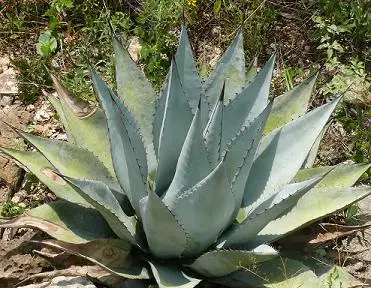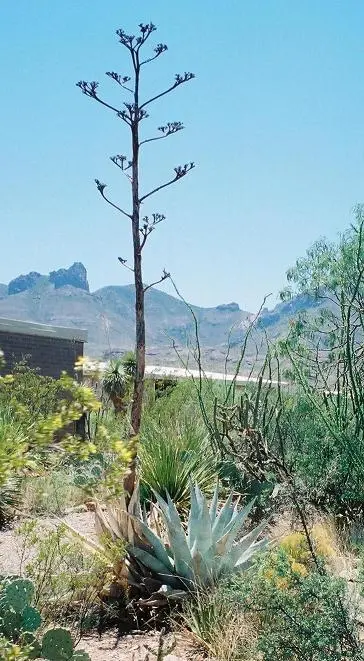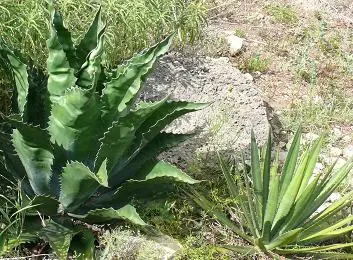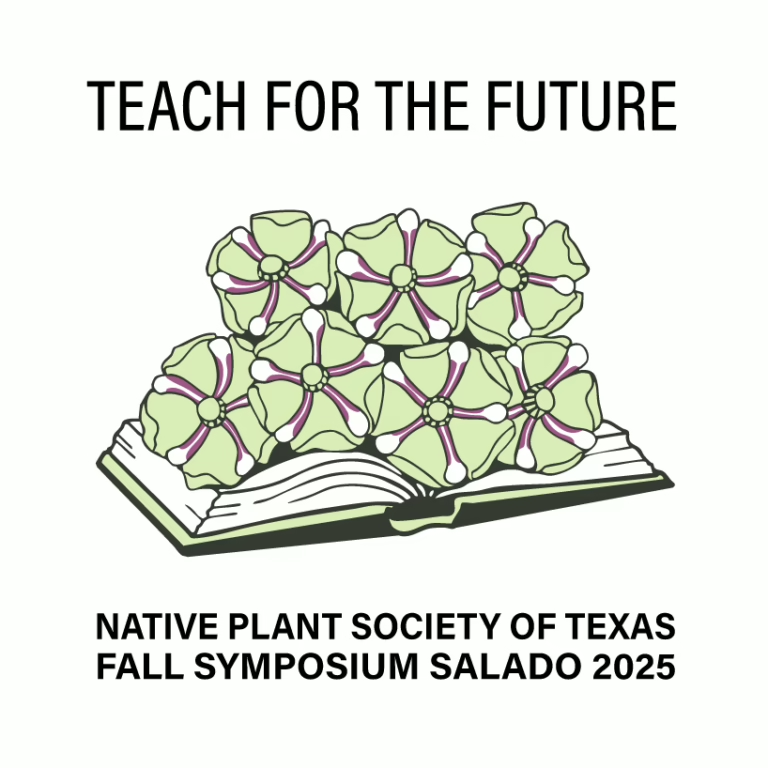Author: Bill Ward
This very hot and dry summer has made us appreciate the xeric plants in our yard. At a time when we don’t want to waste a drop of water, it is gratifying to have good-looking landscape plants we never have to water. For hot July, Operation NICE! (Natives Instead of the Common Exotics!) has chosen the highly xeric plant agave (Agave sp.) as Plant of the Month.
Agave has been a familiar landscape plant for a long time, here and around the world, especially in tropical and subtropical zones. When I was growing up in San Antonio, about the only agave people grew in their yards was “century plant.” We all were intrigued that these plants only bloomed every hundred years and then died. This was fun to believe, even if it turned out to be a fable.

When I was in my late-teenage years, I learned something even more intriguing about century plants. Tequila is made from them! And that turned out to be true! In my somewhat older years when I did field work in Mexico, I had more than one kind of experience with more than one kind of agave. More on that later.
Even though there are old drawings with Don Quixote and Sancho Panza riding by large century plants in the Spanish countryside, those plants are American, not Spanish. Agaves are chiefly Mexican, but also are native to southwestern US, Central America, and tropical South America. Now days, agaves and another American, the prickly pear cactus, seem to be just a natural part of the Mediterranean landscape. Agave must have been one of the first “ornamentals” transplanted to Europe by the early explorers.
Agaves come in different sizes with different colors and forms. Most have thick succulent leaves with sharp teeth along the margins and big terminal spines. At least one kind, the foxtail agave (Agave attenuata), has no teeth or terminal spines. This one might be safer along garden paths.

There are five species of agave native to Texas, mostly in the Trans Pecos or the southern tip of Texas. Agave americana, the century plant, is among the Trans Pecos plants, but it is more common in tropical America. It is called maguey in Mexico.
This is the large light-gray variety most familiar in gardens and commonly available at nurseries. Also sold today is a popular variegated variety with yellow or white stripes running the length of the leaves.
The century plant takes a number of years to bloom, depending on the soil, climate, and vigor of the individual plant. The spectacular bloom stalk might extend as much as 15 feet or more into the air. By the time the cluster of blooms goes to seed, the plant is dying, but by that time new offshoots are growing adjacent to the old plant.
I can’t tell whether the whitetail deer of our subdivision eat century plants or not. In our yard, however, they do enjoy spending the night chewing and shredding the leaves.
Most agaves sold in the nursery trade grow in full sun and require no irrigation once they are well established. The Boerne Chapter of the Native Plant Society of Texas provides free planting and care instructions for the century plant at nurseries participating in Operation NICE! (Barkley’s Nursery Center, Hill Country African Violets and Nursery, and Maldonado Landscape and Nursery).
In Mexico, parts of the maguey are eaten, including the flowers, leaves, and stalks. Fiber is extracted from the leaves of several agave species for making rope and woven goods. Also the young flower shoot may be cored out so that sap collects in the hole. Fermentation and distillation of the sap produces pulque, mezcal, and tequila. The highest quality tequila comes from the blue agave (Agave tequilana), specifically the Weber blue agave.

During my days of doing geology in Mexico, I had a little indirect experience with Agave tequilana, but a lot of direct experience with Agave lechuguilla. Lechuguilla is a tough little yellow-green agave that usually gets no more than about two feet high. On dry hillsides of northeastern Mexico, lechuguilla grows densely intermixed with cactus, leaving no place to walk without getting stuck by some sort of spine. I’ve had to tramp through too many lechuguilla fields trying not to get a bloody jab. I rarely managed to do that. It may be little, but lechuguilla is mean.
On a hike in Big Bend Park last spring I was surprised to see that lechuguilla has a surprisingly beautiful bloom. In the right place, even lechuguilla could be a nice landscape plant. In fact, I’m experimenting with that in our yard now.


